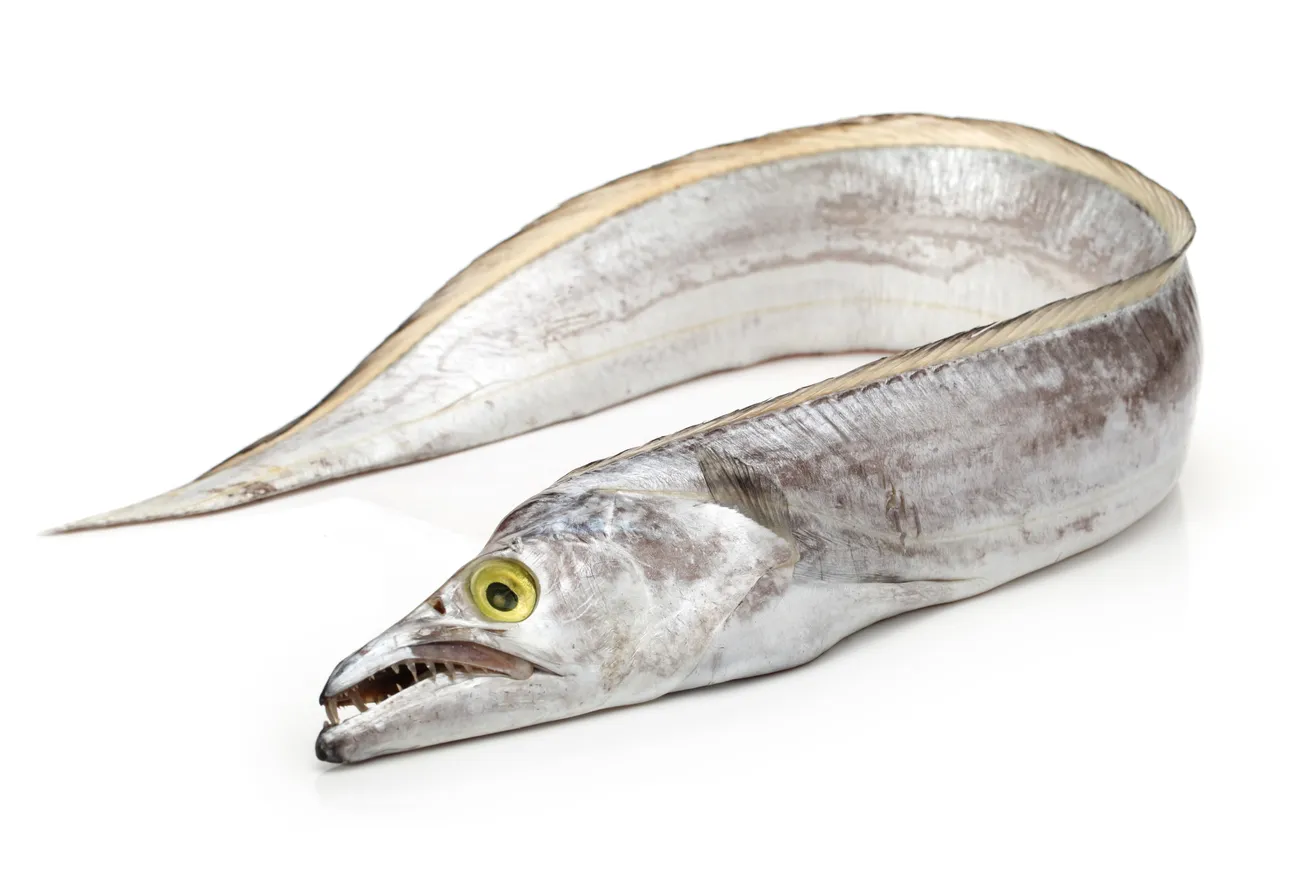Table of Contents
Ribbon Fish (Thalayan): A Culinary and Nutritional Guide
Ribbon fish, locally known as Thalayan in Malayalam, is a fascinating species of fish recognized for its laterally elongated, compressed body and silver-white sheen. Scientifically classified under the Trichiuridae family, ribbon fish is a prized catch in many coastal regions, especially in India, Southeast Asia, and China. It is favored for its tender, white meat, delicate texture, and mild flavor that easily absorbs spices and seasonings.
Nutritional Benefits of Ribbon Fish
Ribbon fish is not only delicious but also packed with essential nutrients. Some of its key nutritional components include:
- High-quality protein: Essential for muscle growth and repair.
- Omega-3 fatty acids: Beneficial for heart health and brain function.
- Vitamins (B12, D, A): Support nerve function, bone health, and vision.
- Minerals (Calcium, Phosphorus, Selenium, Iodine): Strengthen bones, boost immunity, and improve thyroid function.
- Low in saturated fats: Making it a healthy choice for maintaining cholesterol levels.
Flavor, Texture, and Color
- Flavor: Mild and slightly sweet, making it adaptable to various spices and sauces.
- Texture: Soft and flaky, yet firm enough to hold up in different cooking methods.
- Color: Raw meat is white and translucent, turning opaque when cooked.
Cooking Methods for Ribbon Fish
Ribbon fish is a versatile seafood that can be cooked in numerous ways, including:
- Frying – The most common preparation, where the fish is marinated with spices and deep-fried for a crispy exterior.
- Grilling – Marinated with herbs and spices, grilled to enhance its natural flavor.
- Curries – Cooked in coconut-based or tomato-based gravies for a rich, spicy dish.
- Stewing – Slowly simmered in broth with vegetables and spices.
- Steaming – A healthy way to retain its nutrients while enhancing its delicate texture.
- Baking – Seasoned and baked with lemon, garlic, and herbs for a light meal.
Ribbon Fish in Indian Cuisine
In India, coastal communities cherish ribbon fish, incorporating it into traditional dishes, such as:
- Thalayan Fry (Kerala-style) – Marinated with chili, turmeric, and lemon juice, then deep-fried.
- Thalayan Meen Curry – A Kerala delicacy made with coconut milk, tamarind, and spices.
- Mangalore-style Ribbon Fish Sukka – A dry preparation with grated coconut and a blend of aromatic spices.
- Goan Ribbon Fish Recheado – Stuffed with a spicy vinegar-based paste and pan-fried.
Ribbon Fish in Asian Cuisine
Beyond India, ribbon fish is widely consumed in China, Japan, Korea, and Southeast Asia, where it is prepared in unique ways:
- Chinese Braised Ribbon Fish – Cooked with soy sauce, ginger, garlic, and rice wine.
- Japanese Tempura Ribbon Fish – Lightly battered and deep-fried for a crispy texture.
- Korean Jogi-Gui – Grilled ribbon fish, served with soy-based dipping sauces.
- Thai Spicy Ribbon Fish Curry – Made with lemongrass, coconut milk, and red curry paste.
Market Availability and Shelf Life
Ribbon fish is available fresh, frozen, or dried in seafood markets across India, China, Southeast Asia, and the Middle East. Its shelf life depends on storage conditions:
- Fresh: Best consumed within 1-2 days when refrigerated.
- Frozen: Can be stored for several months if properly packed.
- Dried & Salted: Extends shelf life significantly, commonly used in coastal cuisine.
Sustainability and Fishing Practices
Ribbon fish is widely caught using trawling and gill nets. Sustainable fishing practices are essential to prevent overfishing and maintain marine biodiversity. Conservation efforts focus on regulated fishing seasons and promoting eco-friendly catching techniques.
Final Thoughts
Ribbon fish (Thalayan) is a nutritious, flavorful, and versatile seafood enjoyed across India and Asia. Its delicate white meat makes it an excellent choice for a variety of traditional and modern dishes. Whether fried, grilled, curried, or stewed, this fish remains a favorite among seafood lovers worldwide.









